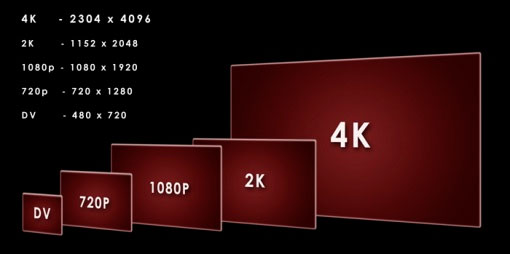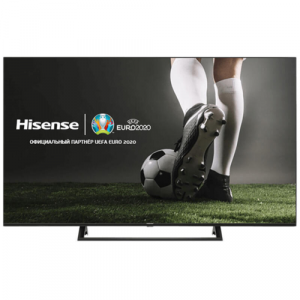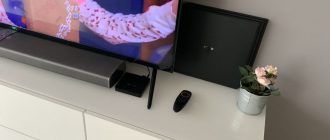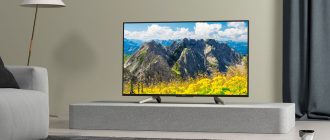Today, a good 43-inch TV is easier to find than smaller models. There is a tendency for manufacturers not to invest effort and money in improving small TVs. We tried to select the best models of 2020 and 2021 with high quality images and good reliability. The rating was helped by our partner Andrey Nikolaev - an expert in video technology and just a good person.
43-inch TVs are ideal for living rooms, bedrooms and even kitchens. At 43 inches (which is 109 cm) and Ultra HD clarity, the comfortable viewing distance is 70 cm, while at HD Ready it is 2.4 meters. Therefore, these TVs can be used in rooms with an area of 10 sq. m.
The variety of models and functions often confuses the buyer. We analyzed and compared manufacturers' data, expert opinions and the opinions of ordinary buyers in our review.
- How to Pick a Good TV
- Features of different types of matrix
- Matrix technology
- What is NanoCell and QLED
- Advantages of LCD and OLED technology
- Which resolution to choose
- Contrast and brightness
- Backlight. Edge, Direct, Full array (FALD)
- HDR
- RGBW and WRGB
- Smart TV function
- Myths about choosing a TV
- 4K is not needed. There is still little content, I don't want to overpay for 4K
- If you have Xbox One, PS4 Slim or Xbox Series S - go for 1080p
- 43-inch TVs with the best price-performance ratio
- The best inexpensive 43-inch TVs
How to Pick a Good TV
In addition to the diagonal size and cost, the main criteria for choosing are image quality and functionality. These indicators are always indicated in advertisements and operating instructions, but a common consumer often does not understand these abbreviations.
Features of different types of matrix
In total, there are several types of matrices used in modern TVs:
- Liquid crystal LCD or LED panels. The screen consists of a backlight layer and then a matrix layer. The abbreviation LED (Light Emitting Diode) means that the TV has LED backlighting, and LCD is a liquid crystal matrix. Everywhere they just write LED TV. There are three main subtypes of matrices here: IPS and TN. Separately, the VA (vertical alignment) matrix is distinguished. Such matrices appeared as a compromise between two different in cost and characteristics IPS and TN panels;
- OLED (Organic Light-Emitting Diode) panels. A completely different technology. Here, no additional diode layer is used for illumination. The matrix is built on organic diodes, which themselves glow without additional illumination, which provides better color reproduction.
Matrix technology
The most common display manufacturing technologies today are IPS, VA and OLED. Without going into the technical details of manufacturing, we can say that the quality of the picture and the durability of the screen depend on the technology chosen.
- IPS - LCD screen with LED backlight. The main advantage of these screens is the most accurate color reproduction and wide (178 degrees) viewing angle and no glare. The disadvantages of these screens include their cost, higher power consumption, and display lag and long response time. The last two circumstances lead to image freezing and image overlap. Cons: Not as deep black as on VA, slight bleeding around edges possible.
- VA matrix - the main competitor to IPS. These matrices are installed in most LCD TVs. The main advantage of VA technology is in obtaining rich, deep black color, fast response. Cons: Small viewing angles, slightly synthetic colors.
- OLED is based on organic light-emitting diodes (OLEDs) to achieve near perfect deep and rich blacks, which means high contrast and sharpness of the image. Other advantages of this screen include wide viewing angles (color and clarity are maintained when viewed from any angle of 180 degrees) and fast response. The technology will make it possible to produce very thin and flexible screens. The main disadvantage is the high cost of OLED TVs.
- QLED uses LEDs in the form of quantum dots, which provide faster pixel switching and ensure clear images without displacement. The advantages of this technology are incredible image brightness (up to 2000 nits) and improved color rendering (covers almost 100% of the color space). Another plus is energy efficiency. The disadvantages include high cost and imperfect black color.
We have already covered:
What is NanoCell and QLED
LG manufactures TVs with technology Nanocell... In fact, this is the same IPS matrix, but with an additional light filter. A TV camera with a nanocell is better than without it.
Samsung manufactures TVs with technology QLED... In fact, this is the same VA matrix, but the backlighting is slightly different. Coled TV is better than just VA.
Which is better than Nanocell or QLED? This question is very difficult to answer. If we take the mid-price segment, then most likely QLED is better. In this technology, the type of backlighting is not so critical, and it is Edge LED (side) for the money. But Nanocels have good color rendering. In general, be sure to look at these TVs live before buying.
Advantages of LCD and OLED technology
Not so long ago, the popular OLED matrix on smartphones went into action. This is an OLED matrix where everyone works independently of the others. In this way, not only low power consumption is achieved, but also a more contrasting image. OLED is the undisputed winner in all dimensions except cost. It is far from being democratic here.
But if you want top-notch picture quality, go for OLED technology. True, the budget can be hit not only by the purchase of such a TV, but also by its repair.
Which resolution to choose
Screen resolution is an equally important criterion when choosing a TV for home use. The more pixels, the better the graphics are transmitted, the image is clear and detailed. There are several resolution options in use today:
- HD - the standard for broadcasting programs on TV. Its specifications are 1280x720p. It won't be enough for a 43-inch diagonal.
- FullHD provides average image quality with acceptable detail. Most films are recorded in this resolution. Its characteristics are 1920 × 1080 px.
- 4K Ultra HD - the modern standard for high quality resolution. This resolution can only be found on TVs with a diagonal of 43 inches and above. Its characteristics are 4096 × 2160.
- 8K - the latest and newest generation of resolution. It provides stunning image quality, but there is very little content for it yet. Therefore, it is not yet advisable to purchase a TV with such a resolution. Its characteristics are 7680 × 4320.
For viewing both TV programs and most films, FullHD resolution is suitable. If your budget is tight, you can get by with an HD TV.
Contrast and brightness
The level of contrast affects how deep and rich the dark shades look. And in order to be able to view content at any time of the day, the brightness of the TV is important. A low brightness range can easily lead to eye fatigue, and this should be avoided. The optimal characteristics look like this:
- Contrast in the ratio of white and black colors - 5000: 1;
- Brightness - in the range from 300 to 600 cd / m².
Backlight. Edge, Direct, Full array (FALD)
In LED or LCD panels, there is a division into two types of backlighting:
- Side (Edge) illumination... This is a more budget-friendly backlighting option, in which the LEDs are located at the edges of the screen.
- Back (Direct) illumination... An expensive backlight option, where the LEDs are located behind the matrix. This type creates a more even distribution of light across the screen.
It's not hard to see that backlighting is more efficient and durable. The FALD backlight stands apart, in which the LEDs are still located behind the screen. The difference lies in their ability to turn off in dark scenes. This creates an effect similar to the work of OLED matrices.
HDR
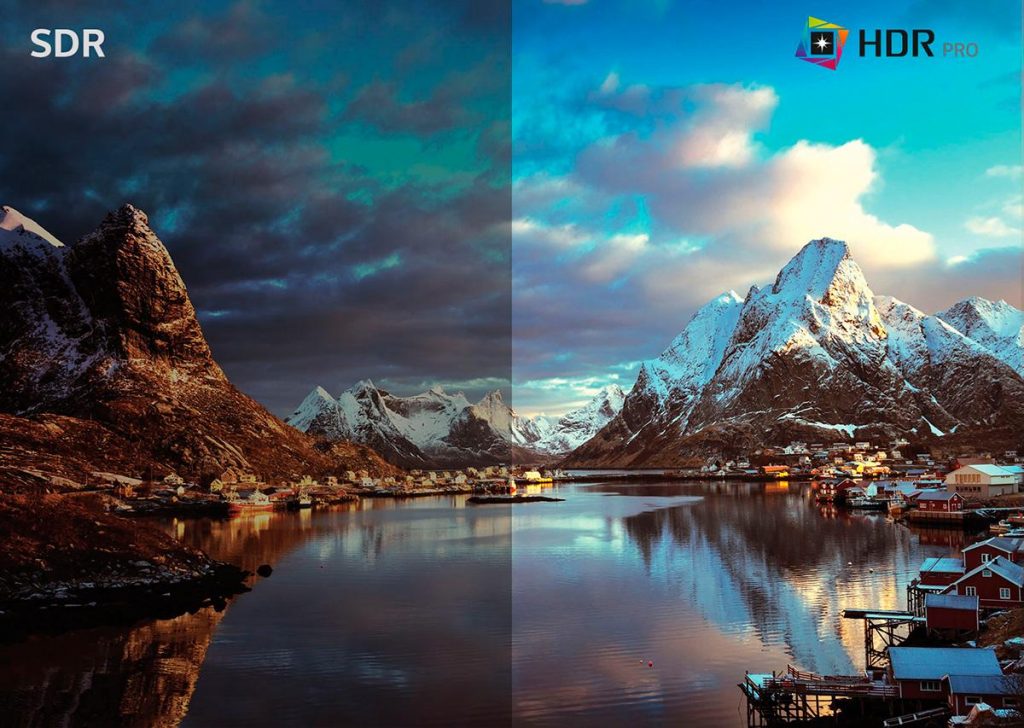 HDR technology is increasingly being used in new TVs. Literally, it means high dynamic range, usually with a color depth of 10 bits. By increasing the level of detail in light and dark shades, the image becomes as realistic as possible.
HDR technology is increasingly being used in new TVs. Literally, it means high dynamic range, usually with a color depth of 10 bits. By increasing the level of detail in light and dark shades, the image becomes as realistic as possible.
Metadata - additional information about how the scene should be displayed. There are several main formats:
- HDR10 is the main, most popular display format.
- HDR Pro is LG's custom format with metadata.
- HDR10 + is a custom display format for Philips and Samsung with metadata.
There are many HDR display formats. But the difference between them is practically not noticeable for an ordinary user.
RGBW and WRGB
RGBW is a cheaper type of LED matrix in 4K TVs from LG. If conventional 4K TVs use a standard RGB type of matrix, where subpixels consist of red, blue and green colors, then white is also added to them. It would seem that the brightness and quality of the picture should be higher, but that was not the case. The subpixel size does not change here.
WRGB is the same type of matrix with the addition of a white subpixel, but with a decrease in their size. The entire group of subpixels fits into one pixel here. This technology is used on OLED matrices of more expensive TVs. This is where it turned out to implement a technology where the image quality does not suffer, but the brightness is higher.
Smart TV function
This function allows you to connect your TV to the Internet via a cable or WI-FI. The built-in operating system turns the TV into a multimedia device that allows you to view content, chat on social networks, watch movies and listen to music from film and music libraries, record on-air programs, and play online games.
We have selected the best from the variety of TV models available on the Russian market. The rating is compiled taking into account the characteristics, price category, expert opinion and customer ratings.
Myths about choosing a TV
4K is not needed. There is still little content, I don't want to overpay for 4K
4K resolution is the standard on all TVs today. This is not a surplus, but a typical picture. When you come to the store, you can hardly find a TV of at least average quality with a resolution of 1080p. You don't buy a smartphone without internet access.
If you have Xbox One, PS4 Slim or Xbox Series S - go for 1080p
The first thing you will encounter when wanting to buy a 1080p TV is their scarcity or lack in stores. Second, such a decision is impractical. This is because even standard consoles have long supported 4K. Well, in addition, the quality of the picture does not always depend only on the resolution. Other characteristics also play a role.
43-inch TVs with the best price-performance ratio
It so happened that in this collection all the TVs presented have the Smart TV function, and almost all models support Ultra HD (4k) format. The rapid development of technology does not allow us to call the model the best with lower performance. Price range 40,000 - 55,000 rubles
Samsung QE43Q67TAU 43 ″ (2020)

The 2020 model of TV with QLED technology delivers 100% surround color. The color volume is certified by the German VDE association. The manufacturer used Dual LED technology, which allows it to adapt its tone to the image being viewed. The screen outside the viewing mode can be customized according to your needs: display the weather widget, time information, photo or any image. This turns the TV into an interior element.Another feature of this device is the ability to simultaneously watch TV programs and duplicate the content displayed on the smartphone on the second part of the screen.
The pluses also include the ideal image contrast and cost. Among the minuses, users call the design (weak attachment of the legs, sagging of the frame), periodic freezing of YouTube and the sound of the speakers.
Samsung UE43TU8510U 43 ″ (2020)
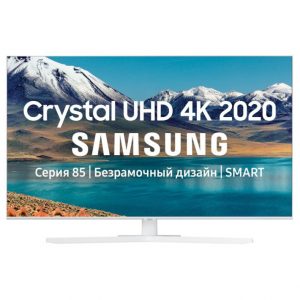
Another 43-inch 4K TV from Samsung. It has practically the same functionality and characteristics: double backlighting, the function of personalizing the screen in standby mode, simultaneous viewing in several windows. The main difference is the use of cheaper VA screen technology. However, the use of Dynamic Crystal Color technology, allows you to make the image rich and crystal clear color reproduction. This also affected the availability of the TV, this model is cheaper than the previous one.
Like the previous model, the Samsung UE43TU8510U 43 has problems with maintaining old formats and sounding speakers. In addition, there are problems with the voice assistant and color adjustment (colors are too bright, cannot be dimmed). Users commented on the design advantages - a stable tripod instead of two horn legs. Supports AirPlay 2 and Game Mode.
Sony KD-43XG7005 42.5 ″ (2019)
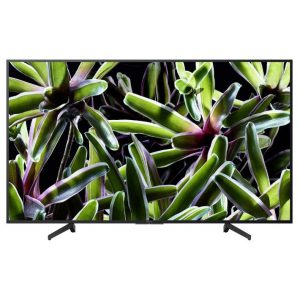
One of the top 43 '' entry-level Ultra HD models, Triluminos' proprietary filtering display delivers crisp images and lifelike colors. The used IPS matrix gives a good viewing angle without distorting the image. 4K X-Reality Pro processor delivers fast frame rates despite 50Hz refresh rates. This allows you to view content in high resolution without sacrificing image quality.
Thanks to DSEE sound enhancement technology, Clear Phase compensation system and S-Force Front Surround, this model delivers excellent sound regardless of the quality of the source.
Customers note the affordable price, organic design, pre-installed streaming channels and the ability to record programs directly to USB. The downside of this model is the lack of Bluetooth and HDR Dolby Vision.
Samsung UE43TU7090U 43 ″ (2020)
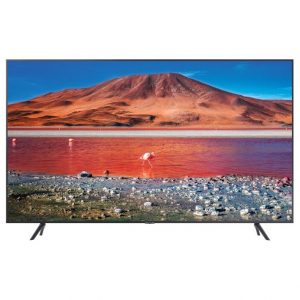
Another Samsung TV. It, like the Samsung UE43TU8510U 43 ″, uses a VA matrix and a Crystal display. The basic disadvantages of the matrix are compensated by the use of new technologies. PurColour does not distort color rendering, resulting in pure blacks and whites, as well as rich colors. UHD Dimming highlights contours and creates volume. Auto Motion Plus compensates for dynamic scenes. Considering the latter factor, as well as quick response, this is a suitable model for gamers.
The Smart function provides both ordinary viewing opportunities for streaming content and remote access to work with office programs. Tizen OS gives a good performance ratio, but provides a slightly lower choice of available applications compared to Android TV.
Users noted the HDR features. Due to the limited brightness when viewing special effects, dynamic range and contrast are lost.
LG 43UN74006LA 43 ″ (2020)
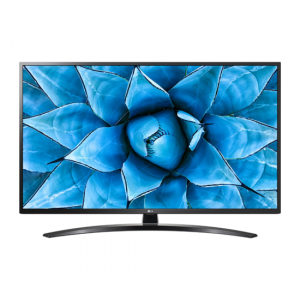
This model, unlike the previous one, uses an IPS matrix. However, LG has not implemented technologies to compensate for the imperfections in the image. Users noted low-quality black color, closer to gray and, accordingly, low contrast. In addition, the screen has light in places, especially along the frame.
The indisputable advantage of this TV is the implementation of the Smart system. The webOS 5.1 operating system provides fast and convenient Internet browsing, no freezes, which is important when using the TV as a game console.
Another benefit is the excellent Ultra Surround sound.
Buyers noted the ease of control both with the help of a remote control and voice. The ability to automatically upscale low-resolution images to near 4K quality.
TCL L43P8MUS 43 ″ (2019)

A good TV with a diagonal of 109 cm worth from 23,000 rubles. All basic functions are implemented. The Smart system on Android TV OS allows you to download and install third-party applications. Wi-Fi provides Internet access, and Bluetooth pairing with other devices. There is integration with voice assistants. The sound system is standard. The Time Shift function allows you to pause live broadcasts, it is possible to record TV broadcasts to external media.
This TV is suitable for watching news, TV programs and surfing the Internet. The image quality leaves much to be desired: there is no motion compensation function (the image is blurry or jerky with fast frame changes), low screen brightness (270 nits), Micro Dimming technology does not solve the issue of image juiciness.
Users also noted the inconveniently located USB port and small viewing angle.
Philips 43PUS7505 43 ″ (2020)

Unlike the previous model TCL L43P8MUS 43 ″, Philips has the opposite. Great picture, but poorly implemented Smart TV function. True, for the best result, you need to change the factory image settings to individual ones. The manufacturer used an IPS matrix, the black level suffers a little, but a wide viewing angle remains. We can say that the contrast of this model is quite good, while maintaining a uniform value across the entire screen.
The brightness of the image is 350 nits, which is a very good indicator for this price range. Color reproduction is somewhat limited, with experts claiming it only reaches 90% according to the VDE version.
An unusual feature is the ability to adjust the sound in the headphones independently of the sound of the TV itself.
Smart TV on the Saphi operating system has a limited number of applications and games.
Xiaomi Mi TV 4S 43 T2 Global 42.5 ″ (2019)
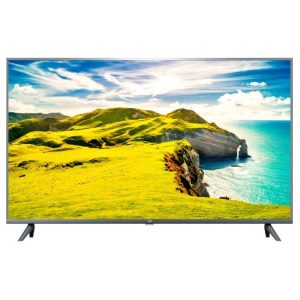
Another model, which, like the TCL L43P8MUS 43 ″, has the image quality suffers in comparison with the implementation of the Smart function. The main complaint of users is the incorrectly working HDR function. The image is characterized by low color depth and brightness, there is no smoothing of dynamics, there are flashes on the screen. Absolutely not suitable as a screen for games.
The TV runs on the Android TV operating system, which allows you to flexibly configure the Smart function and install many applications. There is support for Google Chromecast, due to which you can sync content from your smartphone. Fast online speed and WI-FI 5.5GHz. Good voice control makes it possible to open and change settings, run programs, surf the Internet.
According to customer reviews, the TV does not sound very good.
The best inexpensive 43-inch TVs
This section presents good TVs in the price range up to 20,000 rubles. To achieve such an affordable cost, manufacturers have to use cheaper technologies or abandon some of the functionality, but this does not always affect the image quality.
Hisense 43A7300F 43 ″ (2020)
This model is slightly more expensive than 20,000 rubles, but it already belongs to the higher category of smart TVs. The screen has a resolution of 4K UHD (3840 × 2160), the brightness and contrast of the image are decent. Clarity suffers a little, blurring of displayed objects is observed. Smart function and WI-FI output make it possible to browse the Internet, install applications, listen to music and watch movies. A large selection of different connectors allows you to play multimedia files from a variety of media.
- color depth 8 bit + FRC;
- Anyview Cast support;
- dimming type Ultra Dimming.
Users noticed mediocre sounding of the speakers, lack of volume, as well as a delay in sound when playing content as shortcomings. The advantages include the image quality without visible glare and a large viewing angle.
Hyundai H-LED43ET3001 43 ″ (2019)

This model has a Full HD screen resolution and an IPS matrix. Wide viewing angle, however buyers have noticed distortion when changing the angle and light on the screen. The TV does not have a Smart TV function, but there is the ability to record TV programs on the media and the TimeShift function. The rest is a fairly standard model with average indicators of clarity, color output, contrast, sound. All necessary connectors and outputs are provided. Can be used as a monitor.
Buyers noted good build quality and no freezes. The biggest advantage of this model is its cost. We can say that the TV meets the requirements of an unpretentious buyer who does not need extra cool bells and whistles, but the size of the diagonal, quality and cost are important.
BBK 43LEM-1063 / FTS2C 43 ″ (2019)
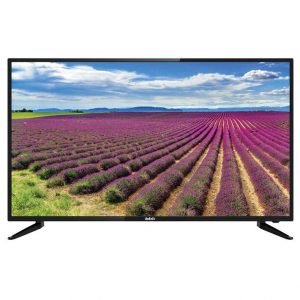
Excellent budget model with FullHD screen resolution and support for major digital TV standards. In addition, the manufacturer has introduced a set of basic standard slots and connectors: HDMI x3, AV, USB, VGA. Buyers note uninterrupted work with external storage media. Good color reproduction, image clarity and contrast. There is no distortion of the image when changing the viewing angle, and there is no light on the screen.
Conventional sound system: two 8W speakers each create decent sound, sufficient for comfortable watching movies and TV shows.
This model lacks the Smart TV function, which is typical for TVs in this price category. Users recommend it for purchase, as it copes with its main functions perfectly.
BQ 4302B 42.5 ″ (2019)
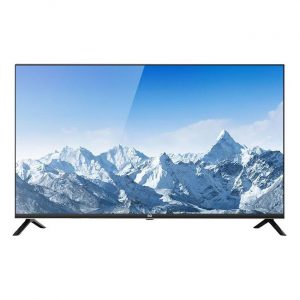
The TV also has a standard 1080p Full HD screen resolution with LED backlighting. Unlike the previous model, this TV has a Smart function, which is quite rare in models of this price category.
The viewing angle is 170 degrees, and therefore the percentage of image distortion in this model is quite low. The improved A +++ matrix allows you to stabilize the image, make the color reproduction bright, the graphics are clear and contrasting.
Connection to the Internet is possible through a cable and using the built-in WI-FI module. The manufacturer used the Android operating system, which provides ample opportunities for installing applications, controlling the TV and content.
You can correct the standard speaker sound by connecting speakers.
In general, buyers are satisfied with the BQ 4302B 42.5 ″ TV, pointing out that it is one of the best inexpensive models in its segment.




